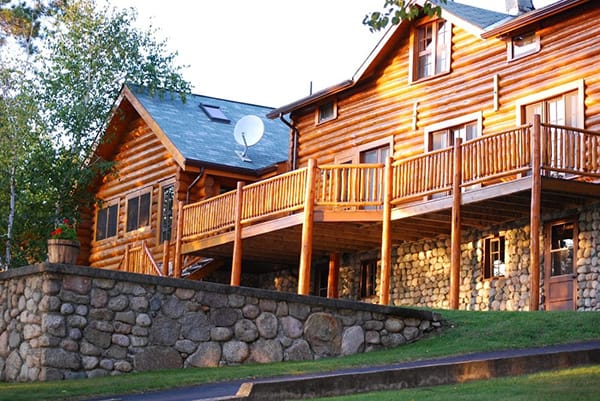
What To Consider When Purchasing Log Cabin Insurance – Protecting Your Mountain Cabin Vacation Home From Harm
If you are fortunate enough to be looking to buy or build a log cabin or mountain vacation home, you are living a blessed life. Time spent with family and friends, Mother Nature, and away from the hustle and bustle of everyday life, there are many perks and pluses to owning a log cabin vacation home. While living the good life, you also want to protect your log cabin investment with vacation home insurance. Remote or isolated dwellings are often exposed to outside elements not often experienced in urban environments. From extreme weather calamities, to wild animals, forest fires, or unwanted intruders, there can be a variety of disaster possibilities. Insurance for your mountain cabin is way to protect your investment. Let’s take a look at some of the things you should consider when securing your vacation home.
Log Cabin Vacation Home Insurance Consideration Number One: Access To Fire Protection Services
We all know wood is more susceptible to burning than masonry, so quicker access to fire stations and nearby fire hydrants will always play a key role in your log cabin insurance cost. All communities have a developed Protection Class rating which specifies the distance to a staffed fire station and closest fire hydrant. If you are in the market to buy or build a new log cabin vacation home, contact us to quote your coverage before you buy. We can tell you the developed Protection Class of the home you are considering before you buy. Both public and private fire protection services will have an impact on your insurance premium.
Log Cabin Vacation Home Insurance Consideration Number Two: Provider Options and Budget
There are fewer log cabin insurance providers than traditional home providers. This creates a smaller market with fewer insurance products and higher premiums. Always purchase your vacation home coverage from an insurance company with financial strength and size. When obtaining an insurance quote for your log cabin, find an independent agent who can provide multiple insurance options. Be sure to compare the pricing, policy coverage, and any exclusions before your purchase your insurance policy. A knowledgeable agent will be able to help you understand the policy and the way it protects your log cabin vacation home.
Log Cabin Home Insurance Consideration Number Three: Construction Material Type and Overall Value
It’s no surprise that log cabin homes are not created equal. Construction material and age of any improvements will play a critical role in how your dwelling limit will be generated. Before an insurance policy can be issued, your agent will need to create a Replacement Cost Estimate (RCE) of the dwelling. This RCE establishes a dwelling limit in the event of a property claim. You will want your beautiful vacation home to be insured adequately. If underinsured, you might not be able to rebuild the same type structure in the event of a total loss claim. Upgrades, like custom finishes, and special materials (granite, marble) also impact the RCE. Similarly, hand-hewn logs are valued differently than a log façade. There are many factors to determining your log cabin’s RCE and final dwelling limit. Studies have shown that log home insurance can be around 20% – 25% more than insurance for the same size non-log home.
The above three considerations all impact your vacation home insurance, so it’s very important to find an agent experience in insuring log cabins to guide you intelligently through the process.
Log cabin insurance underwriting guidelines and property rates can vary greatly within the state, so it’s vital to find a knowledgeable insurance agent you can trust.

